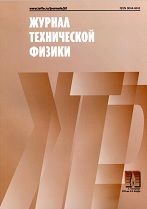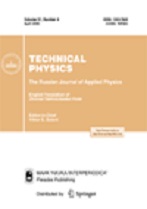|
This article is cited in 1 scientific paper (total in 1 paper)
Gases and Fluids
Nanofluids for power engineering: the mechanism of the influence of dispersing agents on the thermal parameters and crisis phenomena during boiling
V. N. Moraru, B. I. Bondarenko, S. V. Sidorenko, D. V. Komysh
The Gas Institute of the National Academy of Sciences of Ukraine, Kyiv
Abstract:
The influence of dispersing agents of organic (CTAB) and inorganic (sodium pyrophosphate and sodium silicate) nature on the critical heat flux and the heat transfer coefficients during boiling of various water-based nanofluids under free convection has been studied. It has been established that addition of ionic dispersants to aluminosilicate nanofluids, increasing the aggregative and sedimentation stability of the latter, impairs, as a rule, their thermal parameters during boiling causing a sudden precrisis burnout of the heater in the installation powered by direct current. The mechanism of the phenomenon under investigation has been established. It is shown that dispersants and surfactants added to carbon-containing nanofluids with high thermal conductivity, enhancing the stability of the latter, increase, however, the heat transfer coefficient at boiling and cause precrisis burnout of the heater powered by direct current. The influence of dispersants on the crisis phenomena under boiling of water and nanofluids has been analyzed and the causes of sudden precrisis burnout of the heater have been identified. Several mechanisms for interpretation of the effects observed have been proposed. The reasonability of using alternating current for heating and nonionic nonfoaming surfactants and dispersants for prevention of the early onset of the boiling crisis in order to achieve higher values of the critical heat flux and heat transfer coefficient under boiling of nanofluids has been substantiated.
Keywords:
nanofluids, pool boiling, dispersant and surfactant additives, heat transfer.
Received: 31.05.2019
Revised: 31.05.2019
Accepted: 15.09.2019
Citation:
V. N. Moraru, B. I. Bondarenko, S. V. Sidorenko, D. V. Komysh, “Nanofluids for power engineering: the mechanism of the influence of dispersing agents on the thermal parameters and crisis phenomena during boiling”, Zhurnal Tekhnicheskoi Fiziki, 90:2 (2020), 175–184; Tech. Phys., 65:2 (2020), 163–173
Linking options:
https://www.mathnet.ru/eng/jtf5373 https://www.mathnet.ru/eng/jtf/v90/i2/p175
|


| Statistics & downloads: |
| Abstract page: | 54 | | Full-text PDF : | 30 |
|





 Contact us:
Contact us: Terms of Use
Terms of Use
 Registration to the website
Registration to the website Logotypes
Logotypes







 Citation in format
Citation in format 
